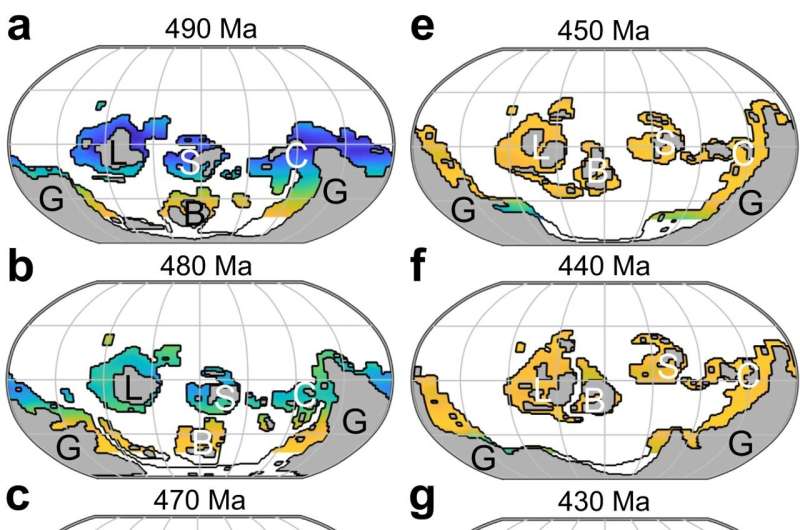October 11, 2023 report
This article has been reviewed according to Science X's editorial process and policies. Editors have highlighted the following attributes while ensuring the content's credibility:
fact-checked
peer-reviewed publication
trusted source
proofread
Model shows fall in ancient sea surface temperatures likely led to Great Ordovician Biodiversification

A team of Earth scientists affiliated with several institutions in France, working with a colleague from Norway, has developed a model to help explain the advent of the Great Ordovician Biodiversification—the largest surge in marine biology in Earth's history. In their paper published in the journal Nature Communications, the group describes the factors that went into their model.
Prior research has shown that approximately 450 million years ago, the Earth experienced a massive surge in the numbers and types of ocean species—a time that has since been named the Great Ordovician Biodiversification. Earth scientists have not been able to find a definitive reason for the sudden increase in ocean diversity, however, with suggestions including increases in atmospheric oxygen (due to an increase in plant life), continental drift and changes wrought by a meteor strike.
In this new effort, the researchers suggest the increase was due to cooling of global sea surface temperatures. They note that prior studies have suggested that global temperatures may have dropped from an average of 40°C to 30°C, which would have been much more favorable to sea life.
To find out if cooling was the most likely reason for the onset of the Great Ordovician Biodiversification, the team collected climate model data and combined it with fossil data and findings from ecological models to create a new model that could be used to depict conditions approximately 440 to 490 million years ago.
The model showed that as atmospheric temperatures fell, ocean surface temperatures fell along with them, most particularly in shallow regions. That led to cooling gradients, with the coldest water around the pools and the sea growing warmer toward the equator. The researchers suggest that led to conditions that were much more conducive to sea life.
They note that prior to the Great Ordovician Biodiversification, ocean temperatures were too warm to support much diversity, particularly in the tropics—most such sea life would have lived around the poles. But as the sea cooled, species would have moved toward the equator, with different types of species evolving to suit the different temperature gradients.
More information: Daniel Eliahou Ontiveros et al, Impact of global climate cooling on Ordovician marine biodiversity, Nature Communications (2023). DOI: 10.1038/s41467-023-41685-w
Journal information: Nature Communications
© 2023 Science X Network



















